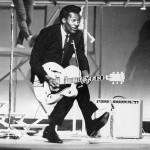By CHRISTOPHER S. RUGABER
AP Economics Writer
WASHINGTON (AP) _ The Federal Reserve on Wednesday downplayed the unemployment rate as a guide to the U.S. economy’s health. But Janet Yellen, the new Fed chair, didn’t leave investors in the dark.
Instead, she listed five gauges that make up her “dashboard” for tracking the economy. She also specified, in some cases, when those measures would signal a healthy economy.
The issue arose because Fed policymakers, like many economists, worry that the unemployment rate might be overstating the health of the economy. The rate has fallen by a full percentage point in the past year. But much of the drop occurred because fewer Americans are working or looking for work. The government doesn’t count people as unemployed unless they’re actively searching for jobs.
For those who want to track the economy along with Yellen, here are the items she listed during a news conference Wednesday, her first as Fed chair:
_ THE U-6:
It might sound like the name of an Irish rock band. But it’s a broader measure of the job market. It includes not only the unemployed but also those working part time who would prefer full-time work and those who have stopped searching for jobs. Last month, the U-6 rate was 12.6 percent, much higher than the unemployment rate of 6.7 percent. Yellen said the number of Americans forced to work part time is “unusually large.” It suggests that she believes the Fed could do more to boost the economy.
_ LONG_TERM UNEMPLOYED:
One particularly brutal aspect of the Great Recession and its aftermath is that millions of laid-off people have struggled to find jobs. In April 2010, 45 percent of the unemployed had been out of work for six months or longer, a record. This proportion has since declined to 37 percent. But that’s still far higher than the pre-recession figure of just 17 percent. Yellen said it “has been immensely high and can be very stubborn” to bring down.
_ LABOR FORCE PARTICIPATION RATE:
This measure is critical to evaluating the job market’s health. It tracks how many people are either working or looking for work. In December, it fell to its lowest level in 35 years before recovering slightly. More retirements by baby boomers account for much of the drop. But Yellen said this rate has also fallen because some of the unemployed have given up looking for work. They could start searching again as the economy improves. If so, they could push up the unemployment rate.
_ QUITTING AND HIRING:
In a healthy economy, more Americans quit their jobs. That’s because they either have a new job _ usually with higher pay _ or they’re confident they can find another. That makes quitting a reliable measure of the job market’s health. The government also tracks the overall number of people hired each month. That’s separate from the net increase in jobs included in each month’s employment report, because a strong net job gain can reflect mainly very few layoffs. Yellen wants to see whether employers are actively adding workers. The number of people quitting jobs has partly recovered from the recession. But Yellen noted that hiring “remains extremely depressed.”
_ WAGE GROWTH:
Yellen highlighted what everyone who has gone without a decent raise for several years knows: “Wage growth has really been very low.” Average pay is rising at a 2 percent annual pace, before inflation, she said _ well below the 3 percent to 4 percent rate she cited as typical of a healthy economy.
Many of these indicators point to a weaker job market than the unemployment rate would suggest. That’s probably why Yellen said the economy is “not close to full employment,” despite the steady decline in the unemployment rate.
But her assessment wasn’t all gloomy. The “dial on virtually all of those things is moving in a direction of improvement,” she said.











